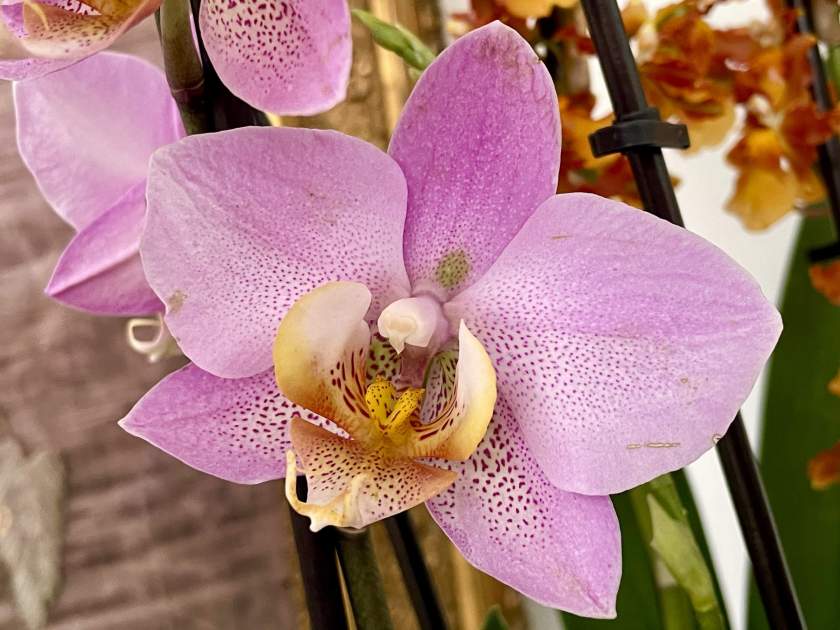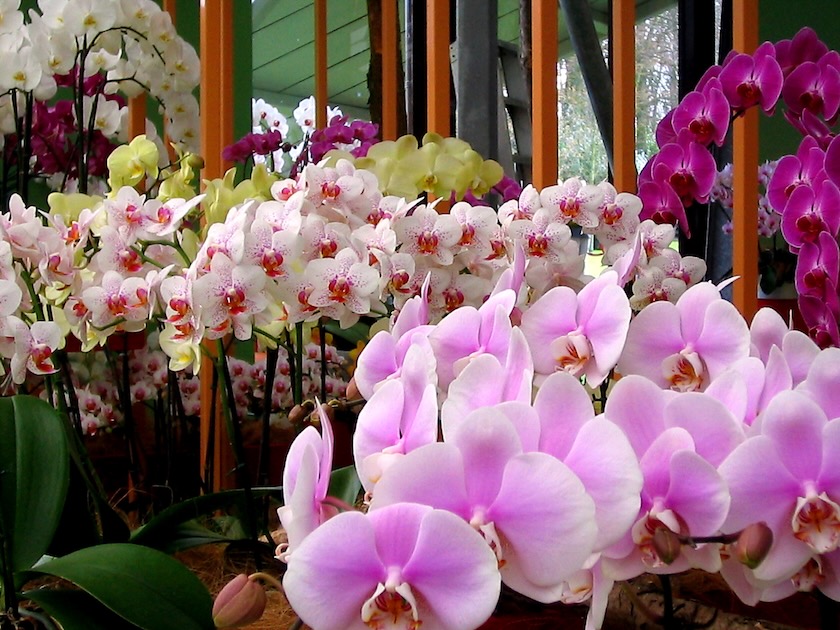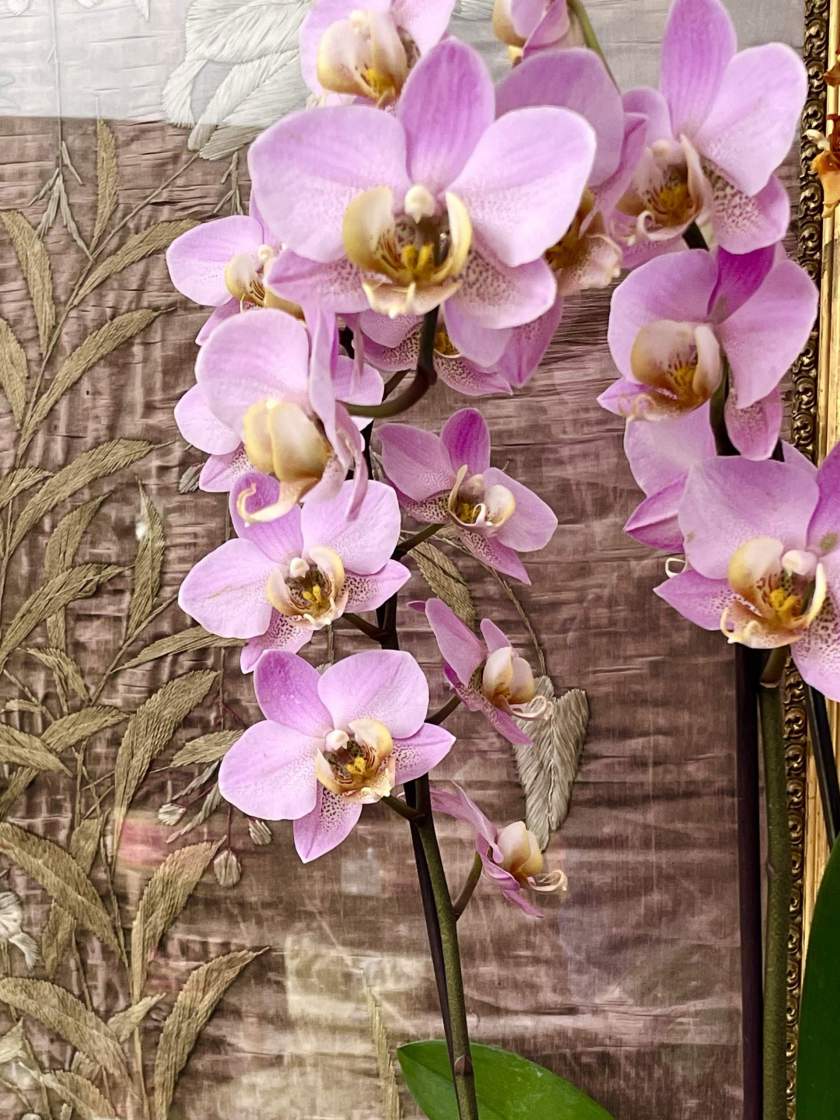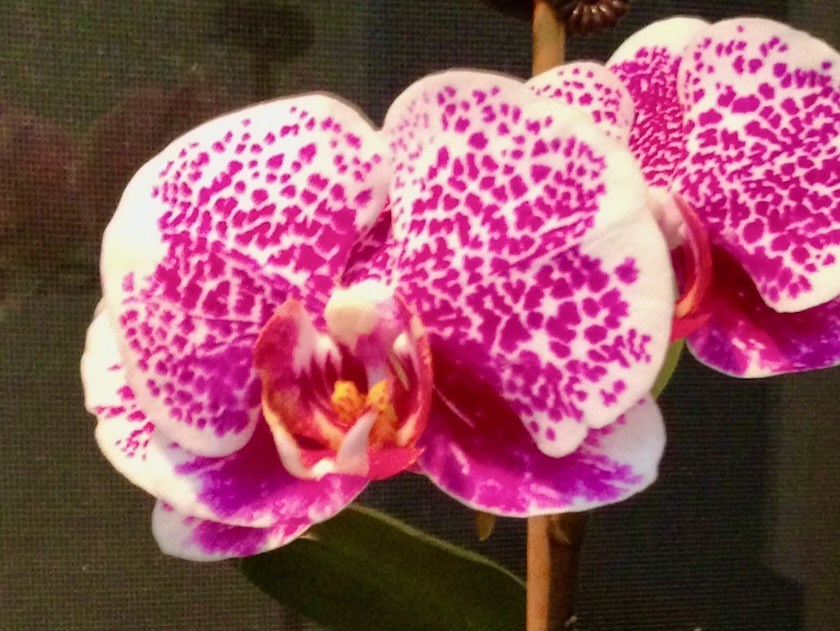Phalaenopsis, commonly known as the Moth Orchid, is a genus of orchids that belongs to the family Orchidaceae. It is one of the most popular and widely cultivated orchids in the world, renowned for its beautiful and long-lasting flowers. Native to Southeast Asia, including countries like the Philippines, Indonesia, and Malaysia, Phalaenopsis orchids have become beloved houseplants and decorative additions to gardens worldwide.
In their natural habitat, Phalaenopsis orchids typically grow as epiphytes, attaching themselves to trees or rocks. They can also be found growing on cliffs or in crevices, thriving in warm and humid environments. These orchids have adapted to various habitats, ranging from lowland rainforests to high-elevation cloud forests.
Phalaenopsis orchids are known for their elegant and showy flowers, which resemble delicate moths in flight, hence their common name. The flowers come in a wide range of colors, including white, pink, purple, yellow, and various shades in between. They have a characteristic structure with three large petals and three smaller petals, often with intricate patterns and markings. The flowers can last for several weeks or even months, providing a long-lasting display of beauty.

How to grow Phalaenopsis orchids:
Caring for Phalaenopsis orchids is relatively easy, making them suitable for both beginner and experienced orchid enthusiasts. They prefer bright but indirect light, making them well-suited for indoor cultivation. Placing them near an east or west-facing window is ideal, as they can benefit from the gentle morning or afternoon sun. However, direct sunlight should be avoided, as it can scorch the leaves.
Temperature and humidity are important factors in the successful cultivation of Phalaenopsis orchids. They thrive in temperatures ranging from 18 to 27 degrees Celsius (65 to 80 degrees Fahrenheit) during the day and slightly cooler temperatures at night. A drop in nighttime temperature can actually stimulate blooming. Maintaining a relative humidity level of around 50 to 70 percent is beneficial, and using a humidifier or placing the orchids on trays filled with water and pebbles can help increase humidity levels.

Watering:
Watering is a critical aspect of Phalaenopsis care. It is important to avoid overwatering, as this can lead to root rot. Instead, a balanced approach is required. The potting medium should be allowed to dry slightly between waterings. A general rule of thumb is to water when the top inch of the potting mix feels dry to the touch. Watering from below by placing the pot in a tray filled with water for a short period can be effective, allowing the roots to absorb moisture. It’s crucial to avoid water accumulation in the crown of the plant, as this can lead to rot. Proper drainage is essential, and excess water should be allowed to drain away.
Fertilizing Phalaenopsis orchids is necessary to support their growth and promote blooming. A balanced orchid fertilizer with a ratio of 20-20-20 or 20-10-10 is commonly used. It is recommended to dilute the fertilizer to half or quarter strength and apply it every two to four weeks during the growing season. During the dormant period, which is typically in winter, fertilizing can be reduced or stopped altogether.
Propagating:
Phalaenopsis orchids can be propagated through various methods, including division, Keiki (baby plant) production, or seed propagation. Division involves separating a mature orchid plant into multiple sections, ensuring each division has healthy roots and leaves. Keikis, or plantlets, sometimes develop on the flower spikes or along the stem of the orchid. These can be carefully removed and potted as individual plants once they have developed their own set of roots. Seed propagation is a more advanced
method of propagating Phalaenopsis orchids. It involves sowing orchid seeds in a sterile growing medium and providing optimal conditions for germination and growth. This process requires patience, as it can take several years for the seedlings to mature into flowering plants.
Repotting:
When potting or repotting Phalaenopsis orchids, it’s important to use a well-draining orchid potting mix. A popular mix consists of bark chips, sphagnum moss, and perlite or charcoal. This type of medium provides excellent aeration and moisture retention while preventing waterlogged conditions that can lead to root rot.
During repotting, care should be taken not to damage the fragile roots. Gently remove the orchid from its current pot, trim any dead or decaying roots, and place it in a slightly larger pot if necessary. Position the orchid in the pot, ensuring that the roots are spread evenly, and fill the gaps with the potting mix. Avoid burying the base of the orchid too deeply, as this can lead to crown rot.
After the flowers have faded, you can remove the spent flower spike by cutting it just above a visible node. This encourages the orchid to redirect its energy towards new growth and potentially produce more flower spikes in the future. Regularly inspect the leaves and roots for any signs of pests or diseases, such as mealybugs or root rot, and take appropriate measures to address the issues promptly.
Phalaenopsis orchids, or Moth Orchids, are captivating plants known for their stunning flowers and ease of care. With the right conditions of light, temperature, humidity, and watering, they can thrive as indoor houseplants or in suitable outdoor environments. Regular fertilizing, repotting, and maintenance practices will help ensure the health and longevity of these beautiful orchids. Whether you’re a beginner or an experienced orchid enthusiast, growing Phalaenopsis orchids can be a rewarding and enjoyable experience.







